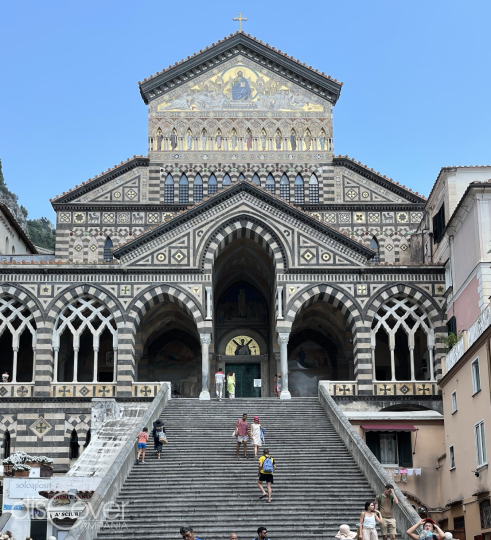Perfect synthesis, already from the black and white facade with Moorish and neo Gothic motifs and the precious mosaic, of the Mediterranean vocation that made a small town great in history, squeezed between the sea and the rugged rocks of the Coast. Going up the 57 steps leading to the cathedral is the beginning of an anticipated and not disappointing emotion, indeed enhanced by the visit to the Romanesque temple with six naves, built in 987 by Duke Mansone I and dedicated to St. Andrew in 1208, when the apostle arrived in Amalfi from the Holy Land and was buried there. The tomb is in a crypt full of works of art, where the "miracle of manna" is renewed seven times a year.
Attached to the cathedral is the Cloister of Paradise, a graveyard for the nobles built between 1266 and 1268, contains important frescoes also from Giotto's school. In front of the cloister stands the bell tower, built between 1108 and 1276, in Romanesque style with Moorish elements. To complete the monumental complex of the Cathedral is the 13th century Basilica of the Crucifix, adorned with frescoes from the angevin period, which houses the Museum of Sacred Art of the Cathedral with the valuable Treasure of the Cathedral.
Opening Hours Museum of Sacred Art of the Cathedral
Monday Closed
Tuesday 10 – 17
Wednesday 10 – 17
Thursday 10 – 17
Friday 10 – 17
Saturday 10 – 17
Sunday 10 – 17







